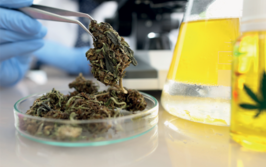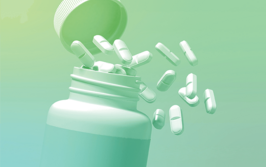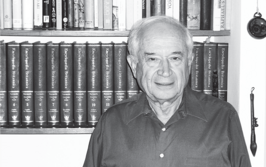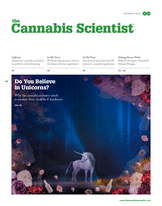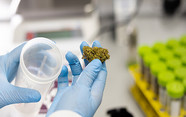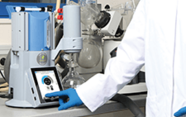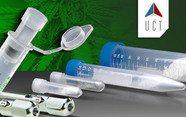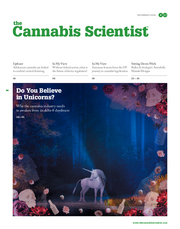
THC: The World’s Oldest Malaria Treatment?
Traditional communities have used cannabis to manage malarial fevers for thousands of years, but how does its chemical structure inhibit parasite growth?
Fire. Domesticated dogs. The wheel. The gene pool that eventually brought us David Attenborough. There’s a lot to thank our ancestors for. And, apparently, we can add malaria treatment to the list. Around 5000 years ago, the world’s oldest pharmacopoeia reported the use of cannabis for malaria fevers. Much, much later, FDA-approved drug Dronabinol (the active ingredient of which is synthetic THC) was identified in a virtual screening study as being potentially effective against hemozoin crystals – a target for antimalarial drugs (1). Malaria biochemistry sidenote: While in red blood cells (during its intraerythrocytic stage), Plasmodium biocrystallizes heme – a toxic byproduct of its consumption of hemoglobin (the parasite is only really interested in the globin, its food) – into hemozoin. By preventing this biocrystallization, the growth cycle can be disrupted.
In a new study (2), researchers explored THC’s antimalarial activity with some confounding results: i) both THC and CBD inhibited β-haematin (synthetic hemozoin) formation, ii) THC inhibited malaria parasite growth (as expected), and iii) CBD had only a mild effect on malaria parasite growth. Puzzled, the team performed a cellular haem fractionation assay to see if THC inhibited hemozoin formation and concluded that it was not the likely mechanism of action for its antimalarial effects. What does it all mean?
Here, we speak with co-author of the study, Ana Carolina Corrêa de Sousa, Department of Chemistry, University of Cape Town, South Africa, to find out.
You discovered that inhibiting hemozoin formation is not THC’s likely mechanism of action. Do you have any theories?
It is important to highlight that this is just a theory but… One known endogenous agonist of cannabinoid receptors is anandamide (AEA). The physiological role of AEA on the hematopoietic and hematological system has been previously studied, and one of the effects observed was on human red blood cells. AEA is known to induce apoptosis in a variety of cells, and it also stimulated erythrocyte apoptosis (eryptosis) in mice infected with Plasmodium berghei ANKA, counteracting parasitaemia and preventing a lethal course of the disease. Enhanced eryptosis of infected human erythrocytes would also delay the development of the parasites during infection. The effect of AEA on the haematological system might be via CB2 receptors, but its mechanism of action on eryptosis remains unclear; however, AEA appears to increase cytosolic Ca2+ activity, leading to cell shrinkage and membrane scrambling.
THC may be acting on CB2 receptors on the erythrocyte membrane, as observed with AEA (but with higher potency). On the other hand, CBD only showed mild antiplasmodial activity and given that CBD acts as antagonist of CB receptors its activity might be related with the known mechanism of increasing anandamide.
Were you surprised that CBD showed such mild antimalarial activity?
I would be surprised if CBD didn’t show activity at all. Due to the evidence from the ancient texts and the chemical similarity to THC, antimalarial activity was expected but the strength of activity was surprising.
Could you tell me more about the traditional use of cannabis for malaria fever?
The first evidence of the medicinal use of cannabis dates back 5000 years to the first known Chinese pharmacopoeia (the world’s oldest). Archeological books describe the use of Cannabis as a treatment for fevers now understood to be malaria. There are also reported traditional uses of cannabis as a remedy to treat malaria in India, Thailand, Cambodia and southern Africa even today by traditional communities.
Do you think healthcare providers would be reluctant to treat malaria with THC today?
Absolutely. The psychoactivity of THC brings up barriers to its medicinal use even though it is already approved by the FDA to treat chronic pain, cachexia, and chemotherapy induced nausea.
How might we overcome THC’s psychoactive effects and optimize its antimalarial effects?
I would start by studying the other cannabinoids to understand the structure–activity relationship in terms of both psychoactive and antimalarial effects. Investigation of the mechanism of action is also important. In this way, we could propose molecular modifications to improve the effects and reduce the side-effects.
